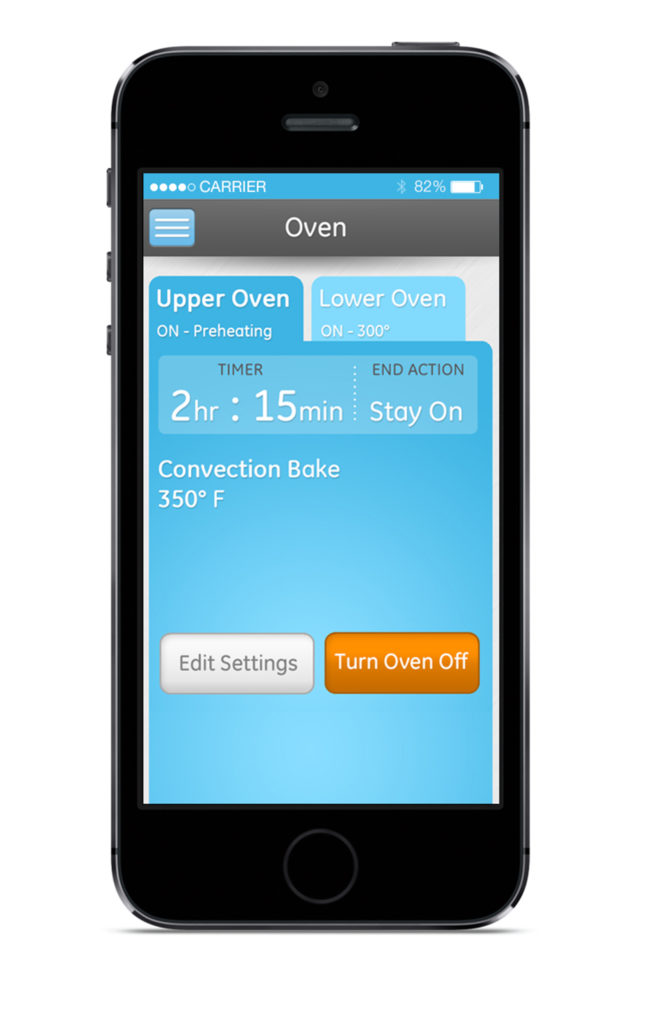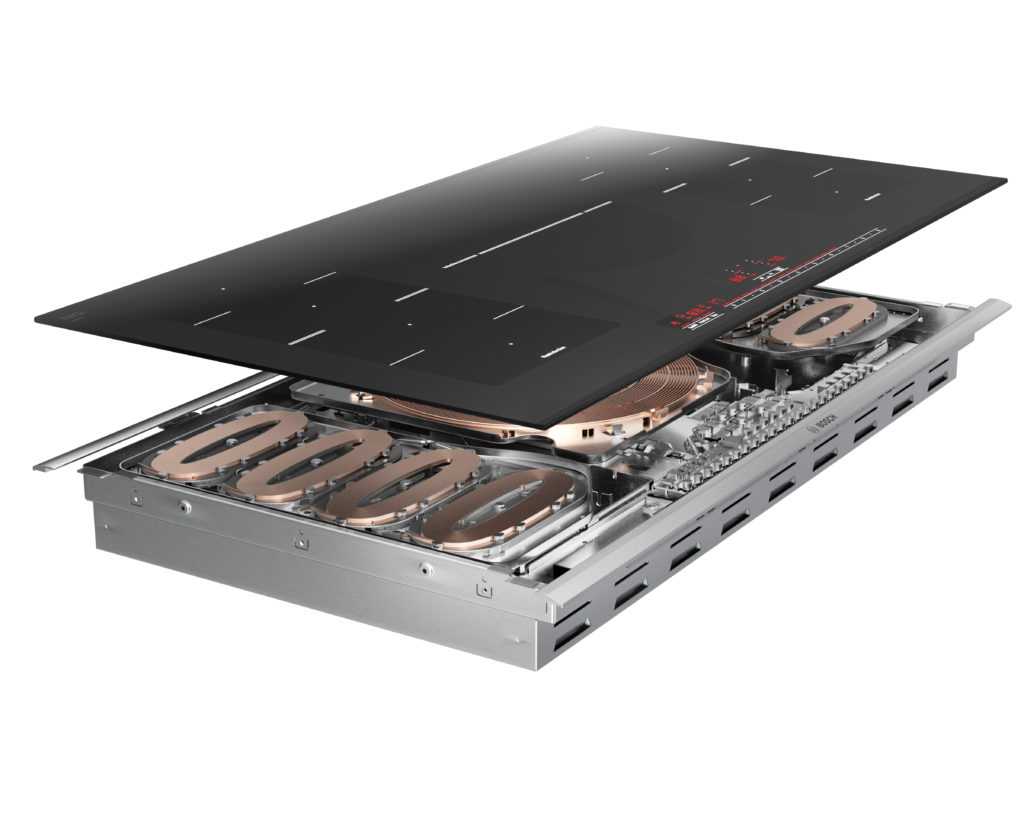One takeaway from Julia’s kitchen (now on exhibit at the Smithsonian’s American History Museum) is just how much and how fast appliance technology has changed. And it’s not just colors and styles. Today’s consumers can tell their ovens and clothes washers what to do when they’re not home, and evenly heat nearly the entire surface of a 36- by 21-inch cooktop. What’s more, kitchen and bath designers and engineers say this is just the beginning of such exciting advances.
High Tech
One of the biggest revolutions has come from wireless technology, according to John Ouseph, Appliances’ Technology Manager, Software & Connected Appliances at GE in Louisville, Kentucky. “The consumer can now remotely monitor, control and receive messages from their appliances,” he says. “This technology makes life simpler and gives back more free time”—a bonus for today’s multitasking households. Basically, the appliance connects to cloud technology via the home’s Wi-Fi. Data goes from the appliance to the “cloud” and then to the owner’s mobile phone app–and back.

That means those stuck in traffic can still preheat the oven, or change its temperature–or turn it off. Gone are the days of leaving for vacation and worrying that something may have been left on. And nowadays, one can check to see if the clothes in the dryer are done from the comfort of a backyard hammock. Connected washers can even save a home from water damage by notifying the owner if there’s a leak. “A lot of it is about giving the customer peace of mind,” says Ouseph.
Cool Cooktops
Induction cooktops use alternating current running through a coil under the cooking surface to create a magnetic field that works to heat metal pots. It only heats the pot, not the cooking surface. (No more burned oven mitts!)

Though the science isn’t new, induction cooktops are an example of a technology that can now be manufactured more cheaply and is being applied in new ways. Bosch Home Appliances, for example, makes “Flexinduction” cooktops that allow cooks to combine two zones into one continuous cooking surface. “It’s a great way to grill on the stove or perfect for a griddle,” says Dan Kenny, Director of Brand Marketing at Bosch Home Appliances in Irvine, California. “And induction technology has a much faster heat time—it takes less than half the time to boil water than a conventional ceramic cooktop.”
Conservationist
Today’s technology has also vastly improved home appliances’ water use. Thermador offers a dishwasher, for example, that uses just 2.2 gallons of water to run a normal cycle—compared to four or five gallons for most dishwashers, and about 20 gallons for washing by hand. It works this magic in part by filtering then recirculating the same water throughout the cycle. Its high-powered motor and recirculation system makes the little water it does use work hard: “If there was a flow meter measuring how much water was used, it would be as if that 2.2 gallons is reused to perform like 600 gallons of water,” says Elkin. The dishwasher also has a heat pump that works in effect as a mini tankless water heater, heating cold tap water rather than drawing from a distant home water heater.
We think Julia would approve.

